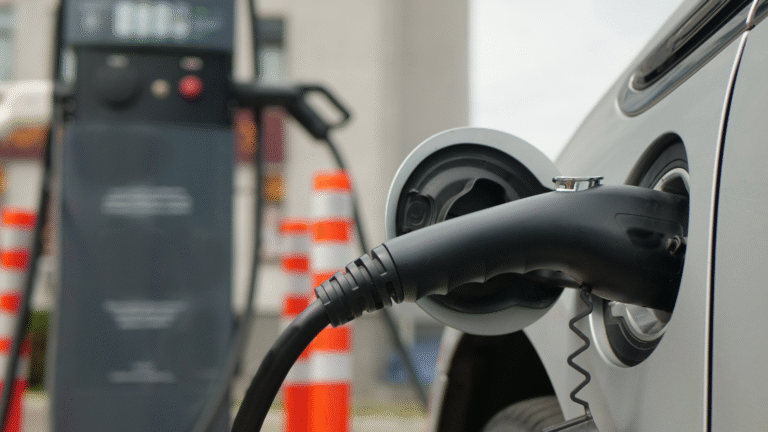As Australia accelerates toward its electric vehicle (EV) future, global and local car manufacturers are stepping up in a big way. From expanded EV lineups to setting up local infrastructure and service networks, brands are positioning themselves to win over Australian drivers. But what’s behind this push—and how does it impact your next car purchase?
In this article, we explore why major carmakers are doubling down on EVs Down Under, what it means for buyers, and how Australia’s transitions could reshape the automotive landscape.
Table of Contents
- Strong Consumer Demand Driving Brand Strategy
- Government Incentives and Regulatory Momentum
- Investment in Local Infrastructure and Services
- Tailored EV Lineups for Australian Needs
- Competition and Brand Positioning
- Economic Opportunities and Job Growth
- FAQs
- Conclusion
1. Strong Consumer Demand Driving Brand Strategy
EV sales in Australia have surged, now accounting for over 10% of new vehicle registrations. This demand is coming from:
- Eco-conscious buyers prioritizing sustainability.
- Urban families switching from petrol to electric for home charging convenience.
- Performance-oriented drivers attracted by instant torque and smooth ride quality.
Major brands—Tesla, Hyundai, Kia, BYD, Volkswagen, Cupra, Mercedes, BMW, Polestar—are responding with broader electric model ranges tailored to Australian tastes.
2. Government Incentives and Regulatory Momentum 🛡️
Australia’s state incentives are fueling brand EV strategies:
- NSW: $3,000 rebate plus stamp-duty exemption.
- VIC: ZEV subsidy and free registration for EVs under $68k.
- QLD & ACT: Similar state-based incentives.
These initiatives are nudging OEMs to offer more EVs at attractive price points—and even push premium features into mid-tier trims to qualify buyers for rebates.
3. Investment in Local Infrastructure and Services
Every savvy EV brand is complementing product launches with support services:
- Nationwide training for dealership staff and technicians in high-voltage systems.
- Kia & Hyundai offer dedicated EV service centres in major cities.
- BYD is partnering with Volvo Group-owned Electromotive on fast-charging hubs.
- Tesla continues to expand its Supercharger and destination charger networks.
These investments ensure new EV buyers get peace of mind in ownership and servicing.
4. Tailored EV Lineups for Australian Needs
Brands are customizing their EV offerings for Australia’s unique market:
- BYD Seal and Dolphin: Long-range sedans and compact hatchbacks aimed at everyday value buyers.
- Cupra Born and VW ID.3: Sporty, urban-focused EVs aimed at young professionals.
- Polestar 2: Premium mid-size sedan targeting eco-luxury seekers.
- Electric Utes (LDV eT60, Ford F-150 Lightning, Rivian R1T): Tailored for tradies, farmers, and 4×4 owners entering the EV market.
5. Competition and Brand Positioning
The increasing EV lineup creates sharp competitive edges:
- Mainstream brands (e.g., BYD, Hyundai) compete on price, long-range, and features.
- Premium marques (BMW, Mercedes, Polestar) focus on luxury, quality, and brand cachet.
- Performance labels (Tesla, Cupra) attract buyers with dynamic driving experience.
In the next 12–24 months, expect aggressive pricing, trimming of features, and innovative ownership models (like subscriptions) as brands fight for market share.
6. Economic Opportunities and Job Growth
Automaker investment in Australia generates broader economic benefits:
- Dealership staff upskilled for EV sales and service.
- Training programs sprouting at TAFE and tech institutes.
- Expansion of charging infrastructure demands electricians, installers, and project managers.
- Local sales growth supports fleet electrification in government and corporate sectors.
As demand grows, EV adoption fosters a clean-economy workforce and stimulates investment in local innovation.
7. FAQs
🔋 Why are global brands launching so many EVs in Australia now?
Australia’s EV market is growing fast. Brands want to capture early adopters and future-proof their portfolios ahead of stricter emissions regulations.
🌐 Is there EV infrastructure enough to support these new models?
Yes—investment from automakers, governments, and networks like Chargefox is steadily improving coverage across cities and rural highways.
🛠️ Will servicing for EVs be easy to find?
Yes. Brands are training local mechanics, opening EV-specific service centres, and offering remote diagnostics.
8. Conclusion
Australia’s transition to electric isn’t waiting—it’s here. Car brands are racing to capture market share with tailored EV models, infrastructure support, and competitive pricing. For buyers, that means more choice, better servicing options, and improved value. Whether you’re shopping for your first EV or upgrading your fleet, now is a great time to join the electric revolution.
Discover why car brands are investing heavily in Australia’s EV market—new models, infrastructure, job growth, and what it means for buyers.
